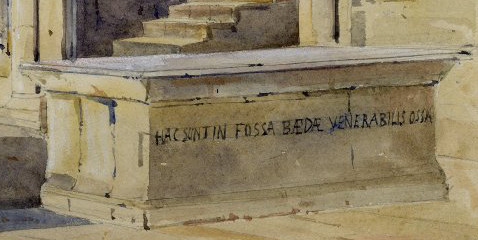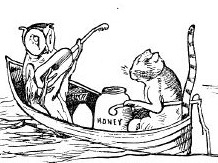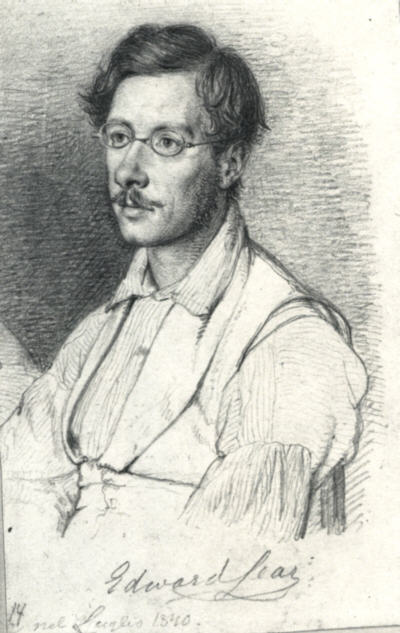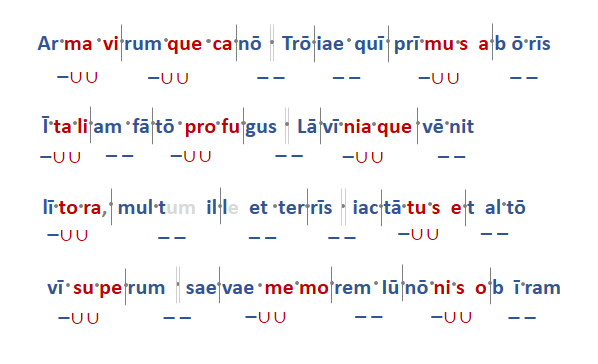|
Leonine Verse
Leonine verse is a type of versification based on internal rhyme, and commonly used in Latin verse of the European Middle Ages. The invention of such conscious rhymes, foreign to Classical Latin poetry, is traditionally attributed to a probably apocryphal monk Leonius, who is supposed to be the author of a history of the Old Testament (''Historia Sacra'') preserved in the Bibliothèque Nationale of Paris. This "history" is composed in Latin verses which rhyme in the center. It is possible that this Leonius is the same person as Leoninus, a Benedictine musician of the twelfth century, in which case he would not have been the original inventor of the form. It is sometimes referred to disparagingly as "jangling verse" by classical purists, for example 19th century antiquaries, who consider it absurd and coarse and a corruption of and offensive to the high ideals of classical literature. In English, the rhyme may be between a word within the line (often before a caesura) and the wor ... [...More Info...] [...Related Items...] OR: [Wikipedia] [Google] [Baidu] |
Metre (poetry)
In poetry, metre ( Commonwealth spelling) or meter ( American spelling; see spelling differences) is the basic rhythmic structure of a verse or lines in verse. Many traditional verse forms prescribe a specific verse metre, or a certain set of metres alternating in a particular order. The study and the actual use of metres and forms of versification are both known as prosody. (Within linguistics, " prosody" is used in a more general sense that includes not only poetic metre but also the rhythmic aspects of prose, whether formal or informal, that vary from language to language, and sometimes between poetic traditions.) Characteristics An assortment of features can be identified when classifying poetry and its metre. Qualitative versus quantitative metre The metre of most poetry of the Western world and elsewhere is based on patterns of syllables of particular types. The familiar type of metre in English-language poetry is called qualitative metre, with stressed syllables comin ... [...More Info...] [...Related Items...] OR: [Wikipedia] [Google] [Baidu] |
Rhyme
A rhyme is a repetition of similar sounds (usually, the exact same phonemes) in the final stressed syllables and any following syllables of two or more words. Most often, this kind of perfect rhyming is consciously used for a musical or aesthetic effect in the final position of lines within poems or songs. More broadly, a rhyme may also variously refer to other types of similar sounds near the ends of two or more words. Furthermore, the word ''rhyme'' has come to be sometimes used as a shorthand term for any brief poem, such as a nursery rhyme or Balliol rhyme. Etymology The word derives from Old French ''rime'' or ''ryme'', which might be derived from Old Frankish ''rīm'', a Germanic term meaning "series, sequence" attested in Old English (Old English ''rīm'' meaning "enumeration, series, numeral") and Old High German ''rīm'', ultimately cognate to Old Irish ''rím'', Greek ' ''arithmos'' "number". Alternatively, the Old French words may derive from Latin ''rhythmus'', from ... [...More Info...] [...Related Items...] OR: [Wikipedia] [Google] [Baidu] |
The Owl And The Pussy Cat
"The Owl and the Pussy-cat" is a nonsense poem by Edward Lear, first published in 1870 in the American magazine '' Our Young Folks: an Illustrated Magazine for Boys and Girls'' and again the following year in Lear's own book ''Nonsense Songs, Stories, Botany, and Alphabets''. Lear wrote the poem for a three-year-old girl, Janet Symonds, the daughter of Lear's friend and fellow poet John Addington Symonds and his wife Catherine Symonds. The term " runcible", used for the phrase "runcible spoon", was invented for the poem. Synopsis "The Owl and the Pussy-cat" features four anthropomorphic animals – an owl, a cat, a pig, and a turkey – and tells the story of the love between the title characters who marry in the land "where the Bong-tree grows". Unfinished sequel Portions of an unfinished sequel, "The Children of the Owl and the Pussy-cat" were published first posthumously, during 1938. The children are part fowl and part cat, and love to eat mice. The family live by pla ... [...More Info...] [...Related Items...] OR: [Wikipedia] [Google] [Baidu] |
Edward Lear
Edward Lear (12 May 1812 – 29 January 1888) was an English artist, illustrator, musician, author and poet, who is known mostly for his literary nonsense in poetry and prose and especially his limerick (poetry), limericks, a form he popularised. His principal areas of work as an artist were threefold: as a draughtsman employed to make illustrations of birds and animals; making coloured drawings during his journeys, which he reworked later, sometimes as plates for his travel books; and as a (minor) illustrator of Alfred, Lord Tennyson's poems. As an author, he is known principally for his popular nonsense collections of poems, songs, short stories, botanical drawings, recipes and alphabets. He also composed and published twelve musical settings of Tennyson's poetry. Biography Early years Lear was born into a middle-class family at Holloway, London, Holloway, North London, the penultimate of 21 children (and youngest to survive) of Ann Clark Skerrett and Jeremiah Lear, a stoc ... [...More Info...] [...Related Items...] OR: [Wikipedia] [Google] [Baidu] |
André Wilmart
Dom André Wilmart O.S.B. (1876 – 21 April 1941 Paris) was a French Benedictine medievalist and liturgist, who spent most of his career at St Michael's Abbey, Farnborough. He was a leading expert on medieval spirituality in the decades between the World Wars. He studied at the University of Paris and the seminary of Saint-Sulpice at Issy. After an extended stay at the Abbey of Solesmes, he decided to become a monk, making his profession in 1901. Shortly after he entered Solesmes, the monks left for England due to ongoing conflict between the Catholic Church and the government of the Third Republic. Wilmart was ordained as a priest in 1906. Soon afterwards he was sent to Farnborough, which was his home for the rest of his life. In addition to Wilmart's work as a scholar, he knew and was influenced by Catholic public intellectuals such as Charles Péguy and Baron von Hügel. Wilmart's most significant work is ''Auteurs spirituels et textes dévots du moyen âge latin'' (P ... [...More Info...] [...Related Items...] OR: [Wikipedia] [Google] [Baidu] |
Richard Sharpe (historian)
Richard Sharpe, , Hon. (17 February 1954 – 22 March 2020) was a British historian and academic, who was Professor of Diplomatic at the University of Oxford and a fellow of Wadham College, Oxford. His broad interests were the history of medieval England, Ireland, Scotland and Wales. He had a special concern with first-hand work on the primary sources of medieval history, including the practices of palaeography, diplomatic and the editorial process, as well as the historical and legal contexts of medieval documents. He was the general editor of the ''Corpus of British Medieval Library Catalogues,'' and editor of a forthcoming edition of the charters of King Henry I of England. (Staff profile on former website with links to some publications.) Biography Starpe studied at St Peter's School, York and then took his BA at Trinity College, Cambridge, studying Classics for Part I of the degree and then Anglo Saxon, Norse and Celtic for Part II, where he studied with, amongst others, Si ... [...More Info...] [...Related Items...] OR: [Wikipedia] [Google] [Baidu] |
Alan Rufus
Alan Rufus, alternatively Alanus Rufus (Latin), Alan ar Rouz (Breton), Alain le Roux ( French) or Alan the Red (c. 1040 – 1093), 1st Lord of Richmond, was a Breton nobleman, kinsman and companion of William the Conqueror (Duke William II of Normandy) during the Norman Conquest of England. He was the second son of Eozen Penteur (also known as Eudon, Eudo or Odo, Count of Penthièvre) by Orguen Kernev (also known as Agnes of Cornouaille). William the Conqueror granted Alan Rufus a significant English fief, later known as the Honour of Richmond, in about 1071.Keats-RohanAlan Rufus (''d''. 1093) ''Oxford Dictionary of National Biography'' Biography Alan Rufus is first mentioned as a witness (along with his mother Orguen and brothers Gausfridus, Willelmus, Rotbertus, Ricardus) to a charter dated to 1056/1060, issued by his father Eozen to the Abbey of Saint-Aubin in Angers (q.v. Albinus of Angers). Alan already held some property in Rouen, the capital of Normandy, and was lord of ... [...More Info...] [...Related Items...] OR: [Wikipedia] [Google] [Baidu] |
Horatio Parker
Horatio William Parker (September 15, 1863 – December 18, 1919) was an American composer, organist and teacher. He was a central figure in musical life in New Haven, Connecticut in the late 19th century, and is best remembered as the undergraduate teacher of Charles Ives while the composer attended Yale University. Biography He was born in Auburndale, Massachusetts. His earliest lessons were with his mother. He then studied in Boston with George Whitefield Chadwick, Stephen A. Emery, and John Orth. His first professional position was playing the organ at St. Paul's Episcopal Church in Dedham, Massachusetts. He was paid a salary of roughly $300 a year from September 1880 to January 1882. He finished his formal education in Europe, a common destination for a young American composer in the 1880s, where he studied in Munich with Josef Rheinberger. His fellow students at the Royal Music School in MunichCharles H. Kaufman. "Whiting, Arthur Battelle." ''Grove Music Online''. ''Oxf ... [...More Info...] [...Related Items...] OR: [Wikipedia] [Google] [Baidu] |
Couplet
A couplet is a pair of successive lines of metre in poetry. A couplet usually consists of two successive lines that rhyme and have the same metre. A couplet may be formal (closed) or run-on (open). In a formal (or closed) couplet, each of the two lines is end-stopped, implying that there is a grammatical pause at the end of a line of verse. In a run-on (or open) couplet, the meaning of the first line continues to the second. Background The word "couplet" comes from the French word meaning "two pieces of iron riveted or hinged together". The term "couplet" was first used to describe successive lines of verse in Sir P. Sidney's '' Arcadia '' in 1590: "In singing some short coplets, whereto the one halfe beginning, the other halfe should answere." While couplets traditionally rhyme, not all do. Poems may use white space to mark out couplets if they do not rhyme. Couplets in iambic pentameter are called ''heroic couplets''. John Dryden in the 17th century and Alexander Pope in th ... [...More Info...] [...Related Items...] OR: [Wikipedia] [Google] [Baidu] |
Dactylic Hexameter
Dactylic hexameter (also known as heroic hexameter and the meter of epic) is a form of meter or rhythmic scheme frequently used in Ancient Greek and Latin poetry. The scheme of the hexameter is usually as follows (writing – for a long syllable, u for a short, and u u for a position that may be a long or two shorts): :, – u u , – u u , – u u , – u u , – u u , – – Here, ", " (pipe symbol) marks the beginning of a foot in the line. Thus there are six feet, each of which is either a dactyl (– u u) or a spondee (– –). The first four feet can either be dactyls, spondees, or a mix. The fifth foot can also sometimes be a spondee, but this is rare, as it most often is a dactyl. The last foot is a spondee. The hexameter is traditionally associated with classical epic poetry in both Greek and Latin and was consequently considered to be ''the'' grand style of Western classical poetry. Some well known examples of its use are Homer's ''Iliad'' and ''Odyssey'', Apoll ... [...More Info...] [...Related Items...] OR: [Wikipedia] [Google] [Baidu] |
Bernard Of Cluny
Bernard of Cluny (or, of Morlaix or Morlay) was a twelfth-century French Benedictine monk, best known as the author of ''De contemptu mundi'' (''On Contempt for the World''), a long verse satire in Latin. Life Bernard's family of origin and place of birth are not known for certain. Some medieval sources list Morlaàs in Béarn, as his birthplace. However, in some records from that period he is called ''Morlanensis'', which would indicate that he was a native of Morlaix in Brittany. A writer in the ''Journal of Theological Studies'' (1907), Volume 8, pages 394-399, contended that he belonged to the family of the seigneurs of Montpellier in Languedoc, and was born at Murles. It is believed that he was at first a monk of Saint-Sauveur d'Aniane and that he entered the monastery of Cluny during the administration of Abbot Pons (1109–1122). Works Bernard is best known as the author of ''De contemptu mundi'' (''On Contempt for the World''), a 3,000 verse poem of stinging satire d ... [...More Info...] [...Related Items...] OR: [Wikipedia] [Google] [Baidu] |




